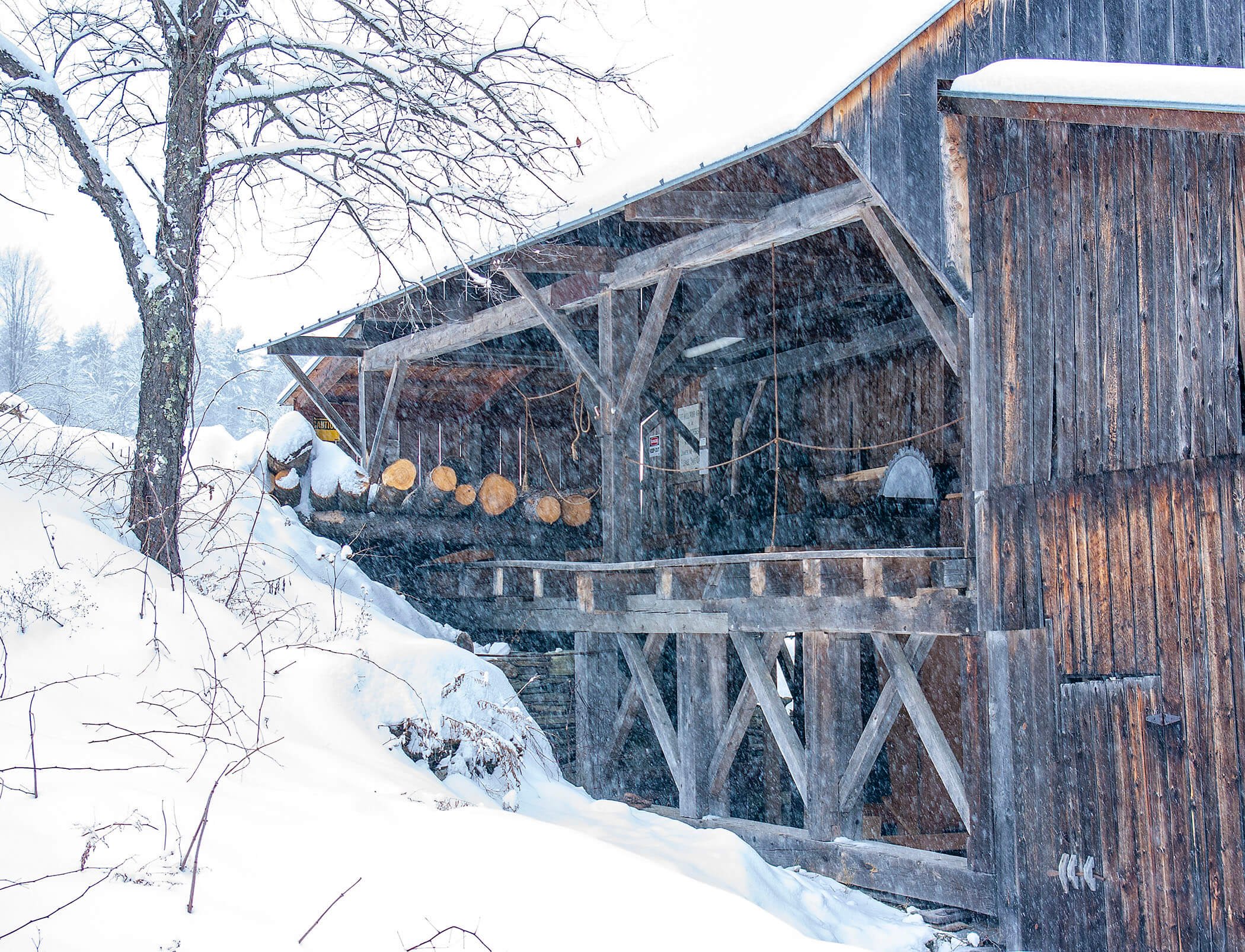
Frequenty Asked Questions
How old is the mill?
The mill was built in 1803. At that time Thomas Jefferson was President and Lewis and Clark were finishing their expedition to the Pacific Ocean.
Who built the mill?
The Robinson Sawmill was one of several water-powered industries in Calais, possibly the first. It was built by Joel Robinson, who came to the area from Massachussetts. Its original overshot water wheel and “up-and-down” saw was replaced during the last half of the nineteenth century by a water-powered turbine and circular saw. The circular saw rig was manufactured at the Lane Shops, in Montpelier. The Mill operated more or less continuously until about 1960.
How does it work?
Water from the pond above the mill is released through a gate into a pipe called a penstock. That water hits a turbine which transfers power through gears and pulleys and belts and shafts and turns the blade on the mill floor.
How much wood can the mill cut?
The mill can run for about an hour. In that time, it can cut about two logs.
How fast does the blade spin?
About 400 revolutions per minute. A modern electric circular saw will turn at around 4,000 to 5,000 rpms.
Why is it called a “thunder mill?”
During thunderstorms, the pond would replenish quickly and would allow the mill to run longer.
Did it supply wood for the town?
Probably, but there were other mills in the area. Mills used to be a centerpiece of villages at the time. Sometimes there was a grinding wheel at the mill where people could have grains processed.
How many people are needed to run the mill?
One person can run the mill though extra hands make the work easier.
Why is the mill so special?
The mill is unique not only in Vermont, but in the country. Though we don’t have clear information about the prevalence of water-powered mills, we believe it is one of the only working water-powered sawmills in New England.. Because it is in such good shape and in such a rural and idyllic location, it attracts attention from visitors all over. In a world filled with technology, a working mill that uses mechanical power from a bygone era is a fascinating thing.
What’s next for the Robinson Sawmill?
By late 2023, we hope to have the machinery for the mill in working condition. That means we will be able to saw logs. However, because we are allowed to only use small amounts of water, we will be sawing only on a demonstration basis. We are in the process of developing educational materials that will enable visitors to understand how the mill works and the role it played in the region’s history.
